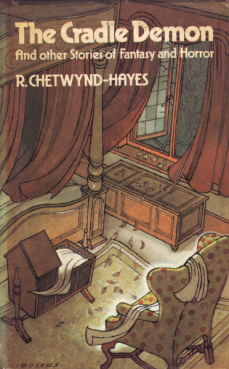 Title: The Creator
Title: The Creator
Author: R. Chetwynd-Hayes
Date of First Publication: 1978
Place of Publication: The Cradle Demon
Type: Short Story
Characters: No Character
Themes: ANDROID; POSTHUMAN; SYMPATHETIC MONSTER
Critical Summary: “The Creator” focuses on Charlie Brownlow, a butcher who is fascinated by Victor Frankenstein and determined to surpass him as a scientist and create a better monster. What he lacks for in actual scientific knowledge, he makes up with his pure creativity and persistence. He lives with his Aunt Matilda, who encourages his innovative bouts while defending him from their questioning family members. Charlie has told his family that he is working on a surprise in their shed. He refuses to give much information about what he is making, but Aunt Matilda shrugs it off and thinks he is making some sort of furniture for her. Everyone else thinks that Charlie is odd and interrogate Aunt Matilda for details on his invention. Unknown to them, he is trying to create a monster that is better than Frankenstein’s creature by making it smaller and incorporating more human tendencies in it. He strives to accomplish this by using the body of Granddad, who passed away a few days prior to his experiment. Charlie uses the torso and brain of his grandfather, while adding the head of a goat and metal parts to his creature. While watching television together, Uncle George insists on knowing exactly what Charlie is up to, so he goes to the shed and sees the monster before Charlie is ready to display him. Uncle George cries in horror, and the entire family is shaken by what Charlie has invented. Aunt Matilda, who is initially a bit shocked, accepts this monster even after discovering that Granddad has been mutilated in order for Charlie to achieve his goal. Her maternal instincts to protect Charlie and be on his side take over, and she asks Charlie what the monster is useful for. Although Charlie had not created the monster in order to have a purpose besides surpassing Frankenstein’s own creation, he states that his monster can perform tasks such as getting the mail and punching holes in cans. The monster can also speak, and it has a very rude way of doing so because of Granddad’s brain. Even though that part upsets Aunt Matilda because she does not like foul language, she has no other complaints about the monster. In this story, the monster does no harm and comes to no harm. It becomes a part of this family’s life, and they accept it. Charlie even considers making it a partner, but he does not have access to another body to use for it just yet.
Thematically, this short story entertains the idea of making something that is not quite human, but not quite machine either. Charlie uses his human Granddad’s body as the biggest part of his creature. The monster has a human torso and a human brain. However, it also has metal arms, red flashing eyes, and speaks through a radio. Its movements are mechanical, but it speaks in Granddad’s voice and shares his speech patterns and personality. Although this monster brings fear in most of the family at first, particularly Uncle George, it is accepted as a part of the family once everyone gets to know it and finds that it has a personality and is useful. Charlie’s monster is different from Frankenstein’s monster in the sense that it is not attempting to be human or to be seen as human by people. Charlie’s monster, named Oscar, is content existing in this in-between state. It is described as a “happy little monster” that just does chores that it is assigned, and then otherwise simply interacts with the family, especially Aunt Matilda. This acceptance allows Oscar to avoid the fate of Frankenstein’s monster who could not cope with its reality.
Administrative Notes: Morelia Ruiz, CSUF; Autumn Nevarez (editing)
